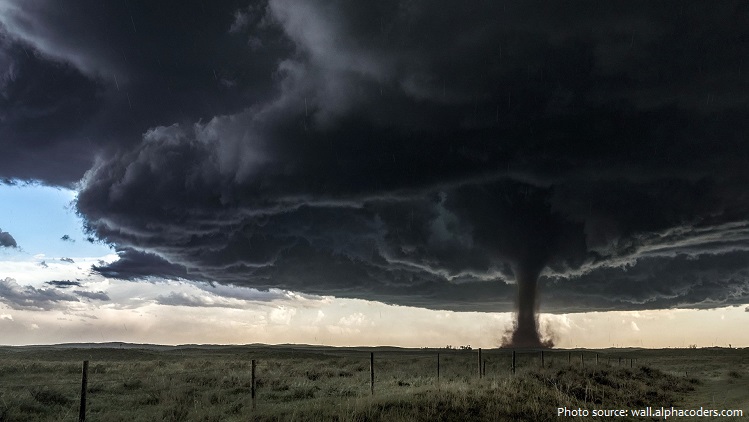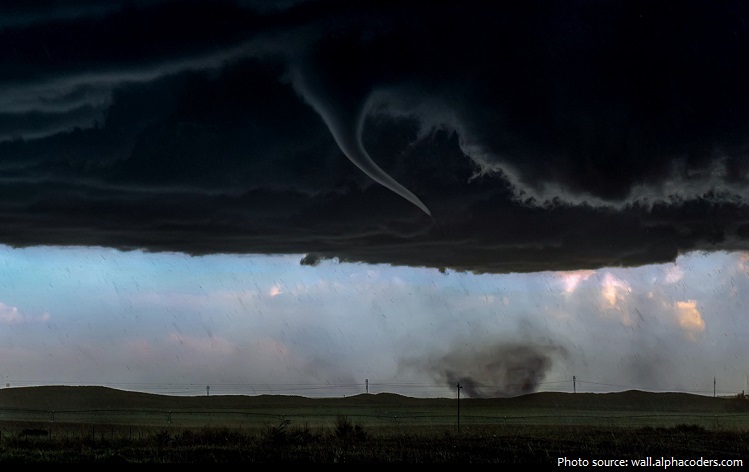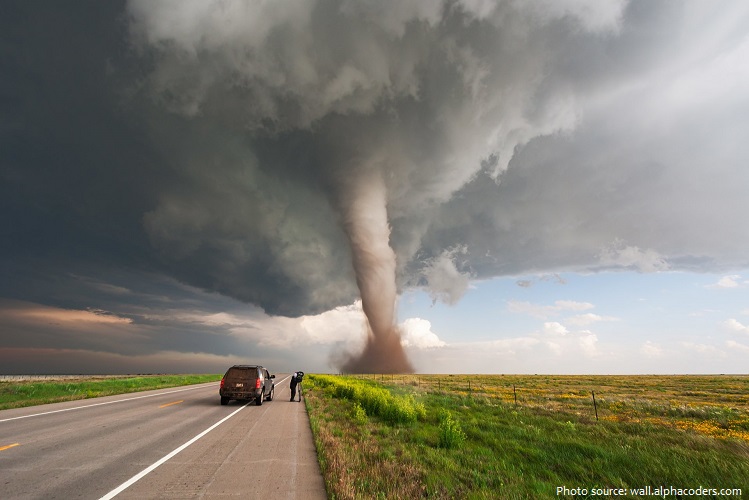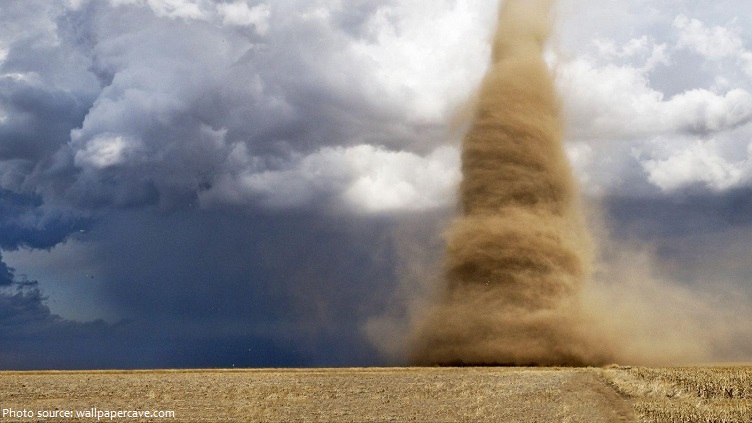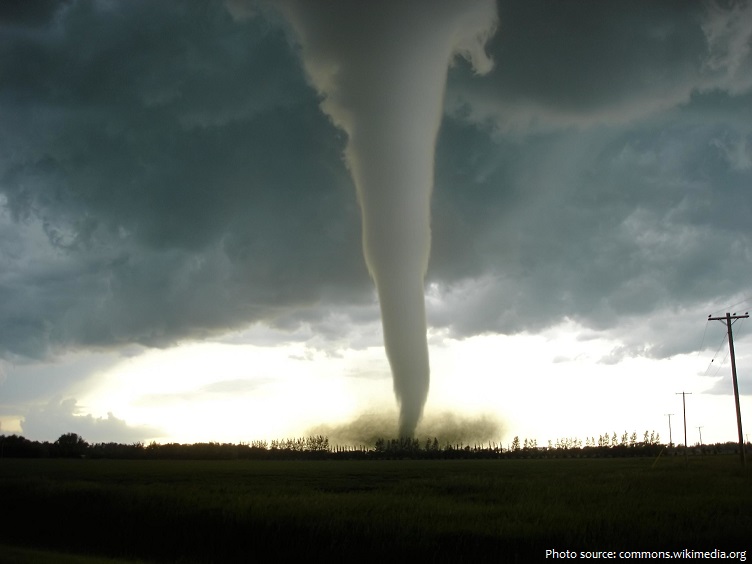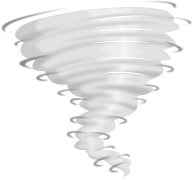Tornadoes are violently rotating columns of air that reach from the base of a storm cloud to the earth’s surface.
A tornado is also commonly referred to as a “twister”, and is also sometimes referred to by the old-fashioned colloquial term cyclone.
Tornadoes have been reported on all continents except Antarctica.
They occur most often in association with thunderstorms during the spring and summer in the mid-latitudes of both the Northern and Southern Hemispheres.
Most tornadoes are found in the Great Plains of the central United States – an ideal environment for the formation of severe thunderstorms.
Tornadoes are associated with large (supercell) thunderstorms that often grow to over 12,000 meters (40,000 feet). A column of warm humid air will begin to rise very quickly.
How the column of air begins to rotate is not completely understood by scientists, but one way the rotation appears to happen is when winds at two different altitudes blow at two different speeds creating wind shear. For example, a wind at 300 meters (1000 feet) above the surface might blow at 8 km/h (5 mph) and a wind at 1,500 meters (5000 feet) might blow at 40 km/h (25 mph). This causes a horizontal rotating column of air.
If this column gets caught in a supercell updraft, the updraft tightens the spin and it speeds up (much like a skater’s spins faster when arms are pulled close to the body. A funnel cloud is created.
The rain and hail in the thunderstorm cause the funnel to touch down creating a tornado.
Tornadoes come in many shapes and sizes, and they are often visible in the form of a condensation funnel originating from the base of a cumulonimbus cloud, with a cloud of rotating debris and dust beneath it.
Tornadoes can have a wide range of colors, depending on the environment in which they form. Those that form in dry environments can be nearly invisible, marked only by swirling debris at the base of the funnel. Condensation funnels that pick up little or no debris can be gray to white. While traveling over a body of water (as a waterspout), tornadoes can turn white or even blue. Slow-moving funnels, which ingest a considerable amount of debris and dirt, are usually darker, taking on the color of debris.
Most tornadoes have wind speeds less than 180 kilometers per hour (110 miles per hour), are about 80 meters (250 feet) across, and travel a several kilometers (few miles) before dissipating.
The most extreme tornadoes can attain wind speeds of more than 480 kilometers per hour (300 miles per hour), are more than 3.2 kilometers (2 miles) in diameter, and stay on the ground for more than 100 kilometers (dozens of miles).
Tornadoes are ranked on the Enhanced Fujita scale, from EF0 to EF5. EF0 for tornados that caused the least damage, and EF5 for the ones that caused the most. An EF5 tornado rips buildings off their foundations and can deform large skyscrapers.
Tornadoes can last from several seconds to more than an hour. The longest-lived tornado in history is really unknown, because so many of the long-lived tornadoes reported from the early-mid 1900s and before are believed to be tornado series instead. Most tornadoes last less than 10 minutes.
Various types of tornadoes include the multiple vortex tornado, landspout, and waterspout.
A tornado does not necessarily need to be visible; however, the extremely low pressure caused by the high wind speeds and rapid rotation usually causes water vapor in the air to condense into a visible condensation funnel.
The longest tornado path length travelled at least 352 km (218 mi) through the US states of Missouri, Illinois and Indiana, on 18 March 1925. It killed 695 people, more than any other tornado in US history. The tornado lasted 3.5 hours, longer than any other in recorded history.
The widest tornado damage path was estimated at 4 km (2.49 mi) wide and was caused by the Hallam Nebraska tornado in the Midwestern USA, on 22 May 2004.
In order to be prepared for these powerful twisters, meteorologists (scientists who study atmospheric weather patterns) have spent decades investigating the causes of tornadoes.
One of the most persistent myths associated with tornadoes is that opening windows will lessen the damage caused by the tornado. While there is a large drop in atmospheric pressure inside a strong tornado, it is unlikely that the pressure drop would be enough to cause the house to explode. Some research indicates that opening windows may actually increase the severity of the tornado’s damage. Regardless of the validity of the explosion claim, time would be better spent seeking shelter before a tornado than opening windows. A violent tornado can destroy a house whether its windows are open or closed.
The word “tornado” comes from the Spanish word tornado (past participle of to turn, or to have torn).

